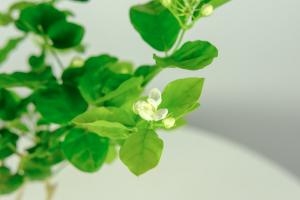1、 Curing method
1. Substrate: the selection of soil requires fertility, good drainage and good porosity. Such soil is more conducive to the growth of butterfly dance
2. Light: I like the astigmatism with sufficient light. In summer, it should be placed in the sparse sun. I don't like the cool environment
3. Temperature: Butterfly Dance likes a warm and cool climate. It is afraid of exposure to the hot sun in summer. When the temperature is above 12 ℃, it can bloom normally for people to enjoy. In winter, it can temporarily adapt to the environment of 0 ℃, and the temperature in winter cannot be lower than 5 ℃, afraid of cold and frost
4. Moisture: in rainy seasons in summer, watering should be controlled. The soil should not be too wet or drenched by rain, otherwise it will cause rotten roots. Controlled watering can protect the flowers and stems of plants. After watering, it should be completely dry
2、 Breeding skills
1. Leaf insertion: cut the leaves strong enough, dry the cut mouth of the leaves, and insert them obliquely in the sand basin. New roots will grow in about 10 days, and small plants will grow in a month
2. Cutting: it's best in May or June. Choose the thick top stems and leaves, with a length of about 10 cm. When it is dry and inserted into the sand bed, roots can grow in about a week. When the roots grow to two or three centimeters, they can be planted in the basin
3、 Problem diagnosis and treatment
1. Weak growth: Butterfly Dance likes the environment with sufficient sunshine. If the light is insufficient for a long time, the plants will be thin and weak, and the viewing effect will be relatively poor, so accept more sufficient light
2. Rotten roots: watering should be controlled in the rainy season in summer. The soil should not be too wet, otherwise it will rotten roots. The rotten roots should be disposed of immediately, the accumulated water should be drained, and the rotten roots should be cut off
4、 Other issues
1. Whether it can be hydroponically cultivated: it can be hydroponically cultivated. Usually in spring or autumn, it is suitable to cut branches of appropriate length for hydroponics. It can take root in a week at about 25 ℃
2. Toxic or not: butterfly dance is non-toxic and belongs to ornamental plants. It can purify the air, absorb toxic gases and absorb formaldehyde

 jackfruit
jackfruit snake plant
snake plant hibiscus
hibiscus hydrangea
hydrangea lavender
lavender Green roses climb al...
Green roses climb al... If you don't pay att...
If you don't pay att... Management of four g...
Management of four g...


































